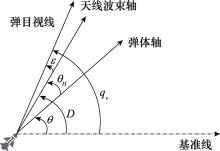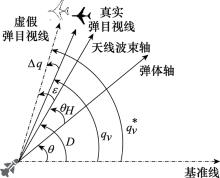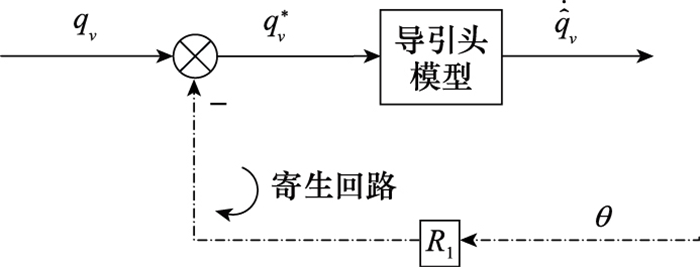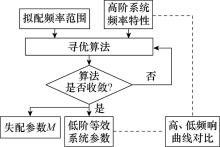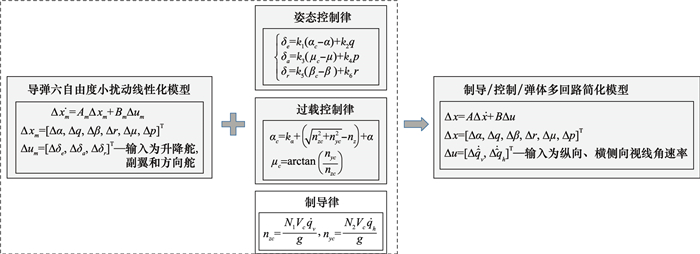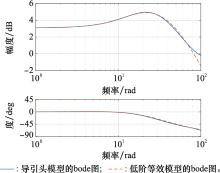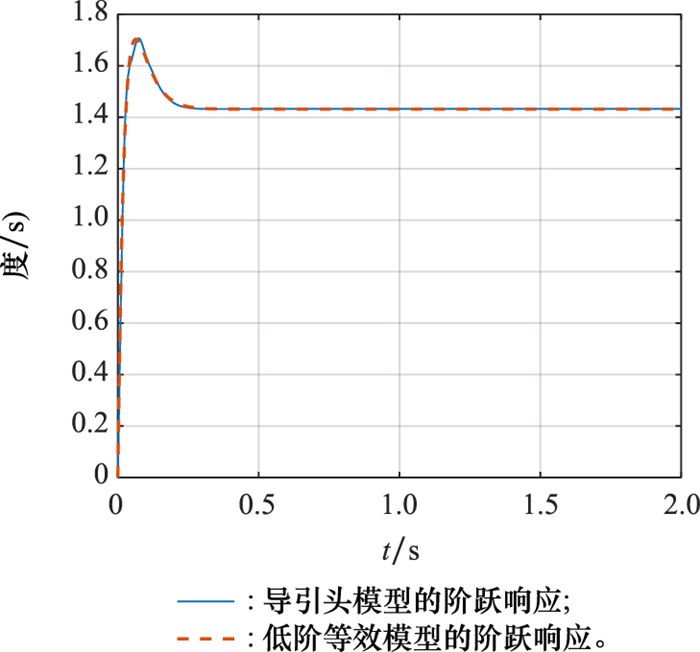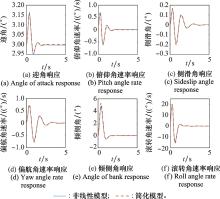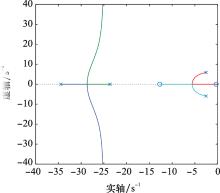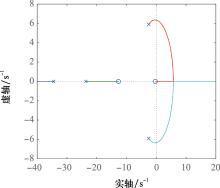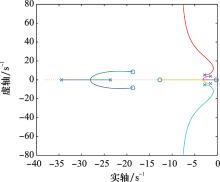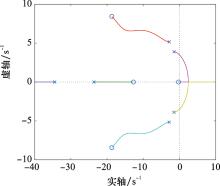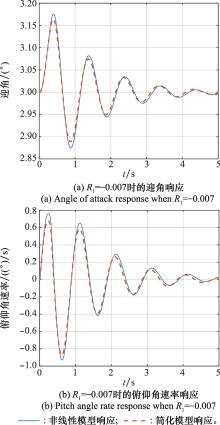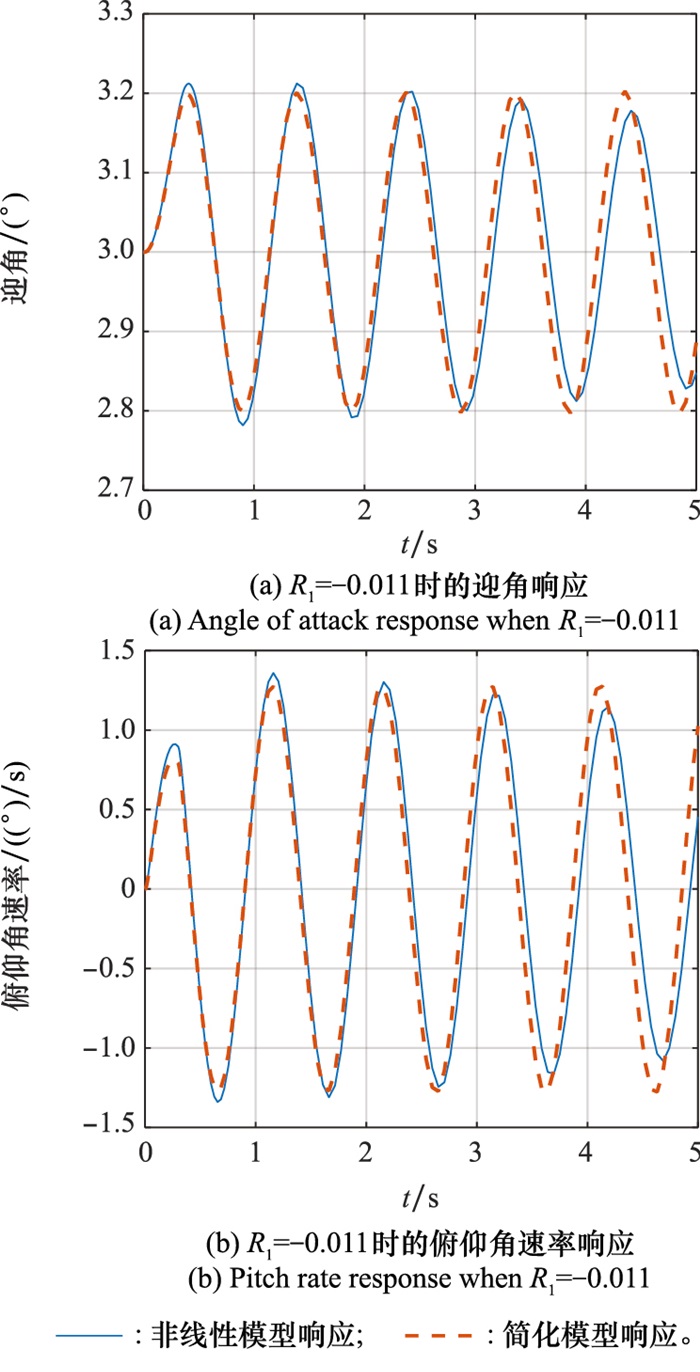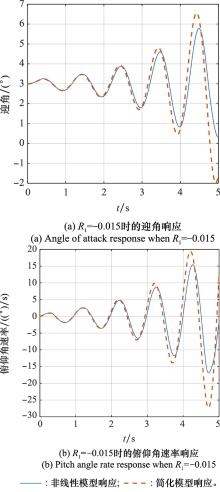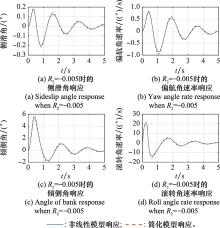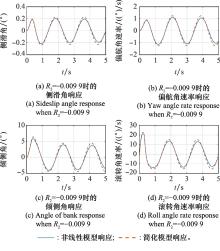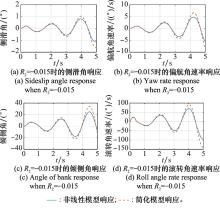Systems Engineering and Electronics ›› 2023, Vol. 45 ›› Issue (6): 1784-1796.doi: 10.12305/j.issn.1001-506X.2023.06.22
• Guidance, Navigation and Control • Previous Articles Next Articles
Stability analysis of radome parasitic loop based on simplified model
Xu CHEN, Yao XIAO, Lingyu YANG, Jing ZHANG
- School of Automation Science and Electrical Engineering, Beihang University, Beijing 100191, China
-
Received:2022-01-07Online:2023-05-25Published:2023-06-01 -
Contact:Jing ZHANG
CLC Number:
Cite this article
Xu CHEN, Yao XIAO, Lingyu YANG, Jing ZHANG. Stability analysis of radome parasitic loop based on simplified model[J]. Systems Engineering and Electronics, 2023, 45(6): 1784-1796.
share this article
| 1 | PALUMBON F , BLAUWKAMP R A , LIOYD J M . Basic principles of homing guidance[J]. Johns Hopkins APL Technical Digest, 2010, 29 (1): 25- 41. |
| 2 |
LIN C L . Stability analysis of radome error and calibration using neural networks[J]. IEEE Trans.on Aerospace and Electronic Systems, 2001, 37 (4): 1442- 1450.
doi: 10.1109/7.976979 |
| 3 | LIN J M, LIN C H. Intelligent fuzzy terminal guidance law for high altitude air defense by taking turning rate and radome error slope into consideration[C]//Proc. of the 6th IEEE Conference on Industrial Electronics and Applications, 2011: 723-727. |
| 4 | MIHAITA A, GHEORGHE G. The influence of radome on radar antennas system[C]//Proc. of the 9th International Confe-rence on Communications, 2012: 151-154. |
| 5 | NESLINE F W , ZARCHAN P . Missile guidance design tradeoffs for high-altitude air defense[J]. Journal of Guidance, Control, and Dynamics, 1983, 6 (3): 39- 47. |
| 6 | NESLINEF W, ZARCHAN P. Radome induced miss-distance inaero dynamically controlled homing missiles[C]//Proc. of the AIAA Guidance & Control Conference, 1984. |
| 7 |
NESLINE F W , ZARCHAN P . Line-of-sight reconstruction for faster homing guidance[J]. Journal of Guidance, Control, and Dynamics, 1985, 8 (1): 3- 8.
doi: 10.2514/3.19927 |
| 8 | SUSUMU M . Radome effect on the missdistance of a radar homing missile[J]. Electronics and Communications in Japan, 1998, 83 (7): 14- 22. |
| 9 |
宗睿, 林德福, 兰玲, 等. 考虑天线罩误差的雷达导引头隔离度影响与UKF在线补偿[J]. 北京理工大学学报, 2016, 36 (12): 1269- 1278.
doi: 10.15918/j.tbit1001-0645.2016.12.012 |
|
ZONG R , LIN D F , LAN L , et al. Influence of radar seeker disturbance rejection rate with radome error and on-line compensation with UKF[J]. Transactions of Beijing Institute of Technology, 2016, 36 (12): 1269- 1278.
doi: 10.15918/j.tbit1001-0645.2016.12.012 |
|
| 10 | 宋建梅, 蔡高华. 半捷联寻的导引头寄生回路稳定性分析与制导精度分析[J]. 宇航学报, 2014, 35 (5): 554- 563. |
| SONG J M , CAI G H . Stability region analysis of the parasitical loop and guidance accuracy analysis of the semi-strapdown homing seeker[J]. Journal of Astronautics, 2014, 35 (5): 554- 563. | |
| 11 | 廖志忠, 王琪. 雷达导引头指向误差对导弹制导的影响与对策[J]. 系统工程与电子技术, 2021, 43 (2): 519- 525. |
| LIAO Z Z , WANG Q . Influence and countermeasures of radar seeker pointing error on missile guidance[J]. Systems Engineering and Electronics, 2021, 43 (2): 519- 525. | |
| 12 | WANG Q, LIAO Z Z, YAN F. Phased array radar seeker pointing error compensation using multiple-model extended Kalman filters[C]//Proc. of the 40th Chinese Control Conference, 2021. |
| 13 | CHEN K W , XIA Q L , DU X , et al. Influence of seeker disturbance rejection and radome error on the Lyapunov stability of guidance systems[J]. Mathematical Problems in Engineering, 2018, 2018, 1890426. |
| 14 |
TIAN S , LIN D F , WANG J , et al. Dynamic stability of rolling missiles with angle-of-attack feedback three-loop autopilot considering parasitic effect[J]. Aerospace Science and Technology, 2017, 71, 592- 602.
doi: 10.1016/j.ast.2017.10.023 |
| 15 |
EKSTRAND B . Equation of motion for a two-axes gimbal system[J]. IEEE Trans.on aerospace and electronic systems, 2001, 37 (3): 1083- 1091.
doi: 10.1109/7.953259 |
| 16 | JANG S A, RYOO C K, CHOI K Y, et al. Guidance algorithms for tactical missiles with strapdown seeker[C]//Proc. of the Society of Instrument and Control Engineers Annual Conference, 2008: 2616-2619. |
| 17 |
ABDO M M , VALI A R , TOLOEI A R , et al. Stabilization loop of a two axes gimbal system using self-tuning PID type fuzzy controller[J]. ISA Transactions, 2014, 53 (2): 591- 602.
doi: 10.1016/j.isatra.2013.12.008 |
| 18 |
雷虎民. 导弹制导与控制原理[J]. 战术导弹控制技术, 2007, 15 (1): 162- 164.
doi: 10.3969/j.issn.1009-1300-B.2007.01.042 |
|
LEI H M . Theory of guidance and control for missile[J]. Control Technology of Tactical Missile, 2007, 15 (1): 162- 164.
doi: 10.3969/j.issn.1009-1300-B.2007.01.042 |
|
| 19 | MURRAY T. Correlation of linear and nonlinear radome error induced miss distance predictions[C]//Proc. of American Control Conference, 1984. |
| 20 | KLEIN I , RUSNAK I . Loop-shaping approach to mitigate radome effects in homing missiles[J]. Journal of Guidance, Control and Dynamics, 2017, 40 (7): 1787- 1793. |
| 21 | KESHMIRI S, COLGREN R, MIRMIRANI M. Six DoF nonlinear equations of motion for a generic hypersonic vehicle[C]//Proc. of the AIAA Atmospheric Flight Mechanics Conference and Exhibit, 2007. |
| 22 |
ZHANG L X , NIE L , CAI B , et al. Switched linear parameter-varying modeling and tracking control for flexible hypersonic vehicle[J]. Aerospace Science and Technology, 2019, 95, 105445.
doi: 10.1016/j.ast.2019.105445 |
| 23 | SRIDHARAN S, ECHOLS J A, RODRIGUEZ A A, et al. Integrated design and control of hypersonic vehicles[C]//Proc. of the American Control Conference, 2014. |
| 24 | 陈禹六. 大系统理论及应用[M]. 北京: 清华大学出版社, 1992. |
| CHEN Y L . Largescale systems theory and application[M]. Beijing: Tsinghua University Press, 1992. | |
| 25 | BAKER J G , GRAVES P R . Pade approximants, part I: basic theory[M]. America: Addsion-Wesley Publishing Company, 1981. |
| 26 | MARY F S . Low-order equivalent models of highly augmented aircraft determined from flight data[J]. Journal of Guidance, Control, and Dynamics, 1982, 5 (5): 504- 511. |
| 27 | HODGKINSON J . History of low-order equivalent systems for aircraft flying qualities[J]. Journal of Guidance, Control, and Dynamics, 2005, 28 (4): 577- 583. |
| 28 | HODGKINSON J, PALOS V. History of low order equivalent systems for aircraft handing qualities analysis and design[C]//Proc. of the AIAA Atmospheric Flight Mechanics Conference and Exhibit, 2003. |
| 29 | EUDENE A . Low-order equivalent system identification for the Tu-144LL supersonic transport aircraft[J]. Journal of Guidance, Control, and Dynamics, 2003, 26 (2): 354- 362. |
| 30 | 丛斌, 王立新. 飞翼布局飞机低阶等效拟配方法[J]. 北京航空航天大学学报, 2018, 44 (2): 286- 294. |
| CONG B , WANG L X . Low-order equivalent matching methods for aircraft with flying wings[J]. Journal of Beijing University of Aeronautics and Astronautics, 2018, 44 (2): 286- 294. | |
| 31 | 杜运理, 夏群力, 蔡春涛. 雷达导引头天线罩误差对制导精度影响研究[J]. 弹箭与制导学报, 2010, 30 (5): 79- 82. |
| DU Y L , XIA Q L , CAI C T . The study on miss distance of radar seeker guided missile due to radome slope error[J]. Journal of Projectiles, Rockets, Missiles and Guidance, 2010, 30 (5): 79- 82. | |
| 32 | 高建军, 白云. 雷达导引头伺服系统的建模与仿真研究[J]. 战术导弹技术, 2009, (2): 67- 70. |
| GAO J J , BAI Y . Modeling and simulation research on servo system of radar seeker[J]. Tactical Missile Technology, 2009, (2): 67- 70. |
| [1] | Shuai LIU, Guorong ZHAO, Bin ZENG, Chao GAO. Moving horizon estimation for uncertain systems with packet dropouts and quantization [J]. Systems Engineering and Electronics, 2020, 42(4): 912-918. |
| [2] | DU Xiao, LU Tianyu, XIA Qunli. Research of disturbance rejection effect performance of the phased array seeker with platform for air-to-air missile [J]. Systems Engineering and Electronics, 2017, 39(4): 846-853. |
| [3] | BAI Rui, XIA Qunli, DU Xiao. Analysis of the parasitical loop and guidance performance of phased array seeker with platform#br# [J]. Systems Engineering and Electronics, 2017, 39(12): 2765-2771. |
| [4] | LV Jian-wei, XIE Zong-ren, XU Yi-fan. Requirement’s determining and optimization on fault isolation’s ambiguity group size of weapon system [J]. Systems Engineering and Electronics, 2016, 38(5): 1208-. |
| [5] | ZHENG Duo, LIN De-fu, XU Xing-hua, QI Zai-kang. Effect of radome and seeker disturbance rejection rate parasitic loop on guidance system [J]. Systems Engineering and Electronics, 2015, 37(7): 1596-1603. |
| [6] | HOU De-long, WANG Qing, DONG Chao-yang, HUANG Xi-yuan. Adaptive tracking control for switched polytopic system of hypersonic vehicle [J]. Systems Engineering and Electronics, 2014, 36(5): 926-933. |
| [7] | LI Fu-gui, XIA Qun-li, QI Zai-kang, SUN Jing. Effect of parasitic loop on strap-down seeker and compensated with identification method [J]. Journal of Systems Engineering and Electronics, 2013, 35(8): 1717-1722. |
| [8] | SHI Junyou, WANG Lu, LI Haiwei, WANG Fengwu. Quantitative analysis of system testability based on design characteristics [J]. Journal of Systems Engineering and Electronics, 2012, 34(2): 418-423. |
| [9] | FU Jian-ping, LU Min-yan, LIU Bin. Software testability analysis based on framework [J]. Journal of Systems Engineering and Electronics, 2011, 33(9): 2133-2138. |
| [10] | GUO Wen-cheng, SHI Wu-xi, GUO Li-jin. Adaptive fuzzy control for a class of uncertain nonlinear systems [J]. Journal of Systems Engineering and Electronics, 2010, 32(2): 351-354. |
| [11] | WANG Dong-mei,FANG Hua-jing. Research on swarm behavior in arbitrarily finite dimensional spaces [J]. Journal of Systems Engineering and Electronics, 2010, 32(11): 2447-2452. |
| [12] | LIN Zhiwen,HE Zhe,YANG Shiyuan. Multisignal model based method for radar testability analysis [J]. Journal of Systems Engineering and Electronics, 2009, 31(11): 2781-2784 . |
| Viewed | ||||||
|
Full text |
|
|||||
|
Abstract |
|
|||||
